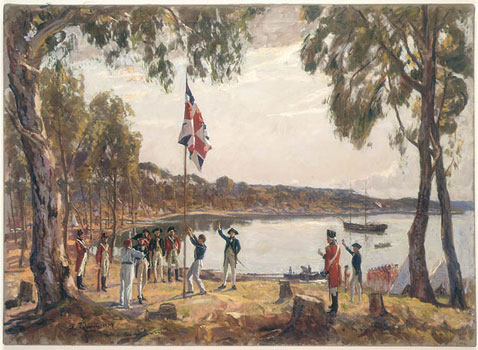The First Fleet
Over 252 days, the First Fleet brought over 1500 men, women and children half way around the world from England to New South Wales.
On 13 of May 1787, the fleet of 11 ships set sail from Portsmouth, England. Led by Captain Arthur Phillip, this historic convoy, which later became known as the First Fleet, carried officers, crew, marines and their families, and convicts from Britain to a distant and little known land on the far side of the world.
The Fleet consisted of two Royal Navy escort ships, HMS Sirius and HMS Supply. They accompanied six convict transports, the Alexander, Charlotte, Friendship, Lady Penrhyn, Prince of Wales and the Scarborough, and three store ships, the Borrowdale, Fishburn and Golden Grove.
Then, from Portsmouth the First Fleet travelled via Tenerife and Rio de Janeiro to the Cape of Good Hope, the Fleet's last port of call before striking out for Terra Australis.
The Fleet arrived first in Botany Bay on 18 January. Despite Sir Joseph Banks' glowing recommendation it proved to be unsuitable for a permanent settlement especially as it lacked a supply of fresh water.
Then on 26 January, the Fleet arrived at a new anchorage at Sydney Cove in Port Jackson. The new site had everything our first settlers needed; deep water close to the shore, shelter and fresh water. Phillip named the site Sydney Cove, after Lord Sydney the British Home Secretary. Today this date is still celebrated as Australia Day, marking the beginnings of European settlement.





